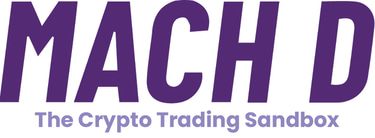Realistic Market Simulations: How Sandbox Trading Prepares You for the Real World
Success in trading requires more than just theory—it demands hands-on experience in real-world conditions. But how can traders build skills and confidence without risking real capital? The answer lies in realistic market simulations. These virtual trading environments replicate live market conditions, allowing traders to test strategies, refine decision-making, and prepare for the challenges of live trading. This blog explores how sandbox trading mirrors real market dynamics, how accurate these simulations are, and why they’re an essential tool for traders of all levels.
BLOGS


What Are Market Simulations?
Market simulations are digital recreations of real trading environments, using live or historical market data to mimic real-world conditions. They allow traders to:
✔️ Execute trades in a risk-free environment
✔️ Observe market behaviour and test different strategies
✔️ Gain real-world trading experience without financial loss
Some trading platforms take this a step further, incorporating advanced analytics, risk management tools, and customizable market conditions to create an even more authentic experience.
How Do Market Simulations Work?
1. Real-Time & Historical Data Integration
✅ Live Market Feeds: Some simulations pull in real-time data, allowing traders to interact with current price movements.
✅ Historical Data: Traders can test strategies against past market conditions to see how they would have performed.
This combination allows users to train with real-world scenarios, building an understanding of how markets react to different events.
2. Replicating Market Dynamics
A high-quality sandbox doesn’t just show price charts—it mimics the challenges of live trading.
✔️ Price Volatility – Experience fluctuating market conditions.
✔️ Order Execution Delays – Understand how slippage and liquidity affect trades.
✔️ Bid-Ask Spreads – Learn how spread sizes impact order execution.
These factors ensure that sandbox trading is not just about placing trades—it’s about managing real trading conditions.
3. Virtual Capital & Risk-Free Trading
Traders receive virtual funds, allowing them to experiment with different strategies, risk levels, and asset allocations without financial consequences. This encourages:
🔹 Bolder experimentation – Try new strategies with confidence.
🔹 Refined decision-making – Learn what works before applying it in live markets.
4. Real-Time Feedback & Performance Analysis
A robust simulation platform provides instant feedback on trades, including:
📊 Win/Loss Ratios – Track overall performance.
📊 Risk-Reward Metrics – Evaluate strategy efficiency.
📊 Trading Psychology Insights – Learn how emotions impact decision-making.
This feedback helps traders refine their approach, improve consistency, and develop smarter trading habits.
How Accurate Are Market Simulations?
While no simulation can fully replicate live trading, advanced platforms come close by:
✔️ Using Real Market Data – Incorporating both live and historical trends to reflect actual market conditions.
✔️ Simulating Market Events – Factoring in price volatility, liquidity changes, and news-driven movements.
✔️ Integrating Risk Management Features – Allowing traders to practice stop-loss placements, position sizing, and capital preservation.
By closely mirroring live trading conditions, simulations provide an effective and realistic training environment.
Benefits of Realistic Market Simulations
✅ Risk-Free Learning
Mistakes are inevitable in trading. A simulation lets you learn from those mistakes—without financial consequences.
✅ Strategy Development & Testing
Sandbox trading allows users to:
🔹 Experiment with different indicators and technical tools
🔹 Backtest strategies on historical data
🔹 Fine-tune approaches before transitioning to live markets
✅ Emotional Discipline & Psychology Training
Trading is as much about mindset as it is about strategy. Market simulations help traders:
✔️ Manage emotions under pressure
✔️ Develop patience and discipline
✔️ Stay level-headed during market volatility
✅ Sharpening Decision-Making Skills
Trading in a realistic setting improves:
📌 Market analysis skills – Learn to identify patterns, trends, and opportunities.
📌 Risk assessment – Understand the impact of leverage, stop-losses, and position sizing.
📌 Execution efficiency – Get comfortable placing trades under different market conditions.
What Sets a Great Market Simulation Apart?
A truly effective market simulation should offer:
📊 Comprehensive Tools – Access to technical indicators, risk management features, and customizable settings.
🔄 Scenario Customization – The ability to simulate different market conditions (bullish, bearish, volatile, etc.).
📉 Real-Time Feedback – Actionable insights and analytics to help traders refine their strategies.
By using a high-quality simulation platform, traders can prepare for real-world markets with greater confidence and accuracy.
Key Takeaways
✔️ Market simulations provide a safe environment to practice trading strategies without financial risk.
✔️ Using real-time and historical data, they closely mimic actual market conditions.
✔️ Traders gain experience in order execution, risk management, and emotional discipline.
✔️ Advanced platforms offer tools, analytics, and customization for a highly realistic experience.
Final Thoughts: Train Smarter, Trade Smarter
Realistic market simulations are an essential step in any trader’s journey. Whether you’re a beginner looking to build confidence or an experienced trader refining strategies, sandbox trading provides a risk-free environment to grow, adapt, and perfect your skills.
Practice smarter today—so you can trade smarter tomorrow!
Disclaimer
Markets are unpredictable—always test your strategies in a risk-free environment before investing real capital. This blog is for informational purposes only and does not constitute financial advice. Only trade with funds you can afford to lose. No guarantees are made regarding the accuracy or completeness of the information provided.


